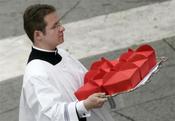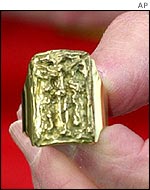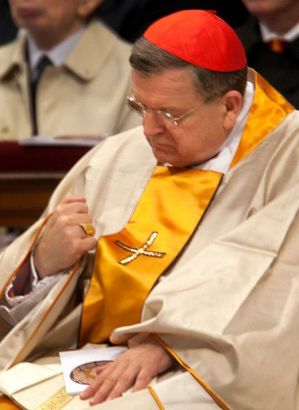 Some segments of the Catholic world are very excited about the Pope’s 12th Day of Christmas gift to 22 bishops and priests: being created a cardinal of the Holy Roman Church. The US gets two new cardinals with Archbishops O’Brien and Dolan receiving the papal nod.
Some segments of the Catholic world are very excited about the Pope’s 12th Day of Christmas gift to 22 bishops and priests: being created a cardinal of the Holy Roman Church. The US gets two new cardinals with Archbishops O’Brien and Dolan receiving the papal nod.
The new cardinals are men who are now are a part of the official priests of the Diocese of Rome. It is no doubt an honor but also a significant responsibility for the man, whether you are over 80 or not. As Archbishops Timothy Dolan (NY) and Thomas Collins (Toronto) said, the Pope’s gift of the cardinal’s hat and ring (two of the symbols of the office) bears an honor for the City (and country) but also a more intense sense of service in helping to govern the Church collaboratively with the Pope. But don’t forget, the first responsibility of a cardinal in the Catholic Church is to gather when the Bishop of Rome dies to elect a new one. Only secondarily no less crucial is the work a cardinal does in advising the Bishop of Rome.
With the “new class” of cardinals brings some subtle but important changes in the creation exercises due on 18/19 February. There is attention being paid to what has become “Liturgy” so as to be consistent with our theology. The changes reflect a tightening of the liturgical theology so that we don’t fall into serious sacramental misunderstanding that have arisen since changes were introduced by the Servant of God Pope Paul VI in 1969. Prior to this point in history, the creation of cardinals was not a public event nor was it a liturgical rite. Pope Paul probably did a good thing in putting the ceremony in the context of prayer and making it publically known to the faithful. In being created a cardinal a man is not given sacramental power nor is he getting into heaven faster because of new duties and closeness to the epicenter of Catholicism. Benedict’s changes reflect a more exact sense of the Liturgy: the worship of God, not the awarding of a prize. What are the changes we can look forward to?
The Office of Liturgical Celebrations of the Supreme Pontiff made the following changes for the creation of new cardinals:
“…the unification of the three phases: the imposition of the biretta, the consignment of the ring and the assignation of the title or diaconate. The collect and the concluding prayer have been modified, and the proclamation of the Word of God made shorter.”
“In the first place, the collect and concluding prayer of the 1969 rite have been recouped, because they are particularly rich and derive from the great Roman tradition of prayer. The two prayers, in fact, speak explicitly of the powers the Lord gave to the Church, in particular that of Peter. The Pope also prays directly for himself, that he may carry out his duties well.”
“The proclamation of the Word of God will also take a shorter form, as used in the 1969 rite, with a single Gospel reading (Mark 10, 32-45) which is the same in the two rites. Finally, the consignment of the cardinalatial ring will be integrated into a single rite. Prior to the 1969 reform, the red hat was imposed during the public consistory, which was followed by a secret consistory in which the ring was consigned and the title or diaconate assigned. Nowadays the distinction between public and secret consistory is no longer observed and it was deemed more coherent to bring the three phases of the creation of new cardinals together into a single rite. What remains unchanged is the following day’s concelebration of Mass by the Pope and the new cardinals, which begins with an expression of homage and gratitude addressed to the Pope by the first of the new cardinals in the name of all the others.

